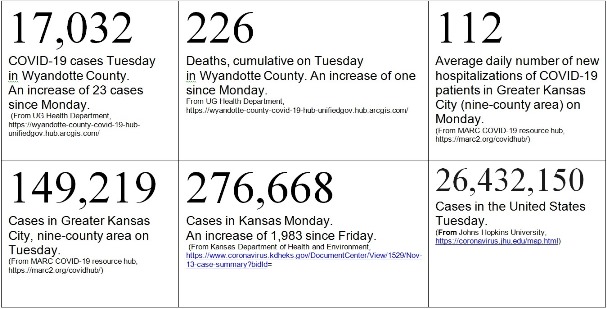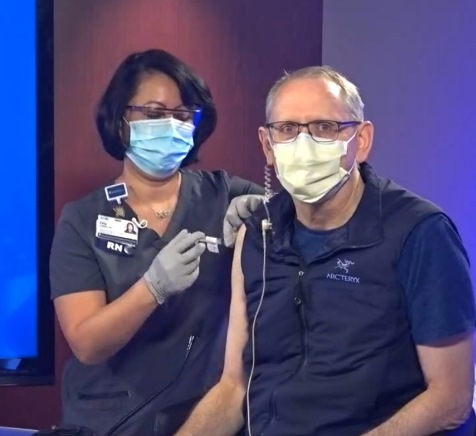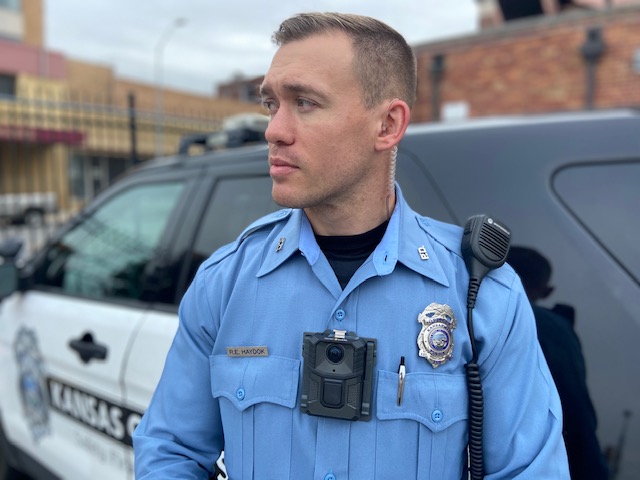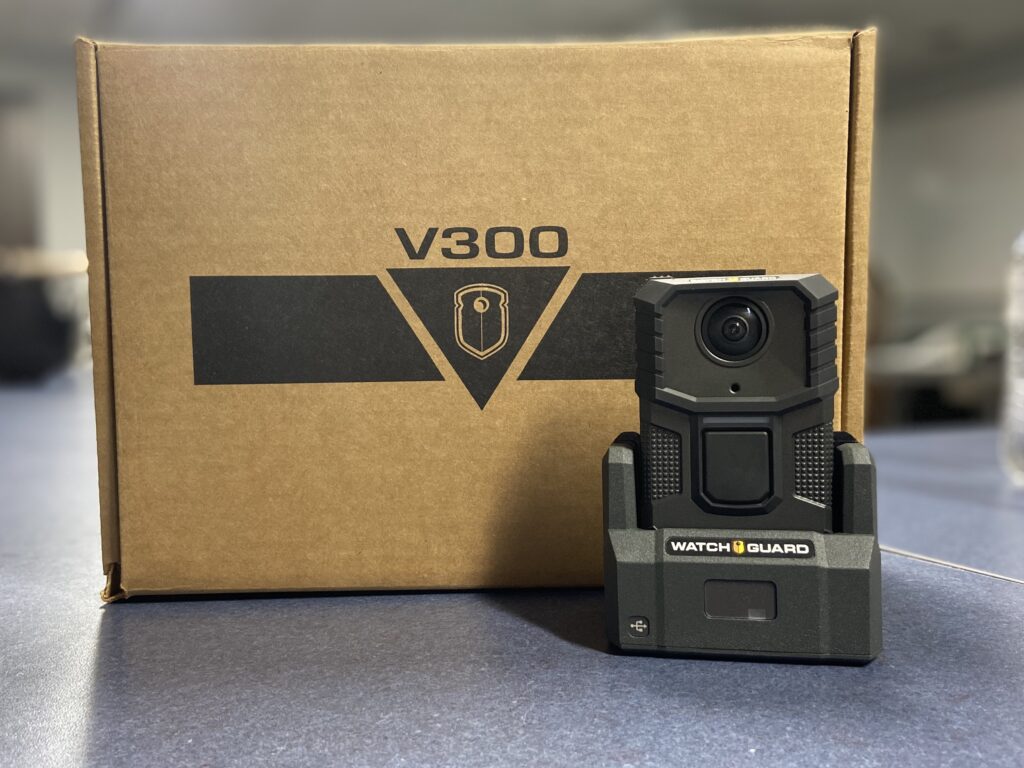

The Kansas Department of Health and Environment has launched a “Find My Vaccine” webpage for Kansas residents.
The website at https://www.kansasvaccine.gov/160/Find-My-Vaccine shows a state map with dots that represent vaccination sites. Dr. Lee Norman, Kansas secretary of health, said the vaccine finder page launched this week, and is part of the Kansasvaccine.gov website. He spoke during the Tuesday news conference at the University of Kansas Health System.
On the vaccination map, viewers can see dots representing vaccination sites. Dots that are blue received vaccine doses this week; dots that are yellow received no doses. Dots that are gray did not report their vaccine information.
Dr. Norman said he recognized that the 45,000 doses a week that Kansas receives is just not enough. He said the state might receive more vaccines when Johnson and Johnson, and Novavax’s vaccines come on the market.
According to Dr. Norman, about 75 percent of long-term care residents vaccinations in Kansas are complete, and about 50 percent of staff are complete. More long-term care vaccinations are expected to be completed within the next week or two, he said.
He said the state has seen improving COVID-19 case numbers. Statewide cases and hospitalizations are dropping dramatically, he said. Statewide, hospitals now have a lot of breathing room, he said. Staff are coming back and there isn’t as much of a staff crunch as previously.
Dr. Norman said strains or variants from the United Kingdom, South Africa and Brazil have not been identified in Kansas yet.
He said the KDHE has increased the capacity in the state to do genomic sequencing.
This week they are installing a second platform that will double or more than double this capacity, he said. The K-State lab also is capable of doing genomic sequencing.
Because the UK, South African and Brazil strains are in other parts of the country, they will eventually find their way to Kansas, he believes.
Currently, the state is using genomic sequencing on an outbreak in a correctional facility where the virus is acting differently, he said. The virus was spreading rapidly at the Winfield facility, according to Dr. Norman. So far, they haven’t found the variants here yet.
Although the doctors thought there would be a day eventually when people could stop wearing masks, it won’t be before the end of summer or fall, according to Dr. Dana Hawkinson, medical director of infection prevention and control.
“I think it’s going to be quite a few months now,” he said. “Even if you’re vaccinated, with one or two doses, you’re still going to be masking and distancing and not meeting in large groups.”
Dr. Steve Stites, chief medical officer at KU Health System, received his second dose of the Moderna vaccine on Tuesday. He said he had no side effects after the first dose except a sore shoulder.
Dr. Stites said the KU Health System will be ready to do 1,500 vaccinations a week if they can get the vaccines.
COVID-19 case numbers reported
The University of Kansas Health System reported 38 active COVID-19 patients in the hospital on Tuesday morning, a decrease of five from Monday, according to Dr. Hawkinson. Nine of the patients were in the intensive care unit, a decrease of one from Monday, and five of the ICU patients were on ventilators on Tuesday, the same as Monday. Another 63 patients were hospitalized because of COVID-19 but were no longer in the acute infection phase, an increase of three since Monday. There was a total 101 COVID-19 patients at the hospital, a decrease of one since Monday.
According to the doctors, increased mask wearing and vaccinations are responsible for the case numbers, which have reached lows not seen since late November.
Wyandotte County reported an increase of 23 COVID-19 cases on Tuesday, Feb. 2, according to the Unified Government’s COVID-19 webpage. There were a cumulative 17,032 cases. There was a cumulative total of 226 deaths, an increase of one since Monday.
The Mid-America Regional Council’s COVID-19 dashboard reported 149,219 cumulative COVID-19 cases on Tuesday. There were 1,885 cumulative deaths, and 112 was the daily average of new hospitalizations.
The state of Kansas reported 276,668 COVID-19 cases statewide on Monday, an increase of 1,983 cases since Friday, according to the Kansas Department of Health and Environment. There were an additional 30deaths reported, with a cumulative total of 3,809.
The Johns Hopkins University COVID-19 dashboard on Tuesday night reported 26,432,150 cumulative cases in the United States, with 446,807 total deaths nationwide.
Free COVID-19 tests Wednesday
COVID-19 tests will be available Wednesday, Feb. 3, at the Pierson Community Center parking lot, 1800 S. 55th St., Kansas City, Kansas. Hours are subject to change depending on the weather and other factors. These tests are through WellHealth Management. Appointments are required. For more information and to schedule a test, visit www.GoGetTested.com/Kansas.
The Unified Government Health Department’s COVID-19 test site at the former Kmart building at 78th and State will be open from 9 a.m. to 3 p.m. on Wednesday, Feb. 3. Appointments are not needed for tests. To see if there is any change to the schedule, visit https://www.facebook.com/UGHealthDept.
The UG Health Department recently added flu testing to the COVID-19 test at the Kmart building. Only one swab is used for the two tests. The Health Department estimates a two- to three-day wait for COVID-19 results. For the flu, the department only contacts people if it is positive.
Tests from the Health Department are free for those who live or work in Wyandotte County. The tests are nasopharyngeal swab tests. The Health Department no longer uses saliva tests.
The tests are open to asymptomatic people as well as those who have symptoms or have been exposed to COVID-19. Check with the UG Health Department’s Facebook page to see if there have been any changes in the schedule. Bring something that shows that you live or work in Wyandotte County, such as a utility bill.
Wyandotte County residents who are interested in getting a COVID-19 vaccine may fill out a survey form at the UG Health Department at https://us.openforms.com/Form/2f2bcc68-3b6a-450b-9007-d39819db6572. Residents will be contacted to make an appointment when vaccine becomes available.
Testing sites are at https://wyandotte-county-covid-19-hub-unifiedgov.hub.arcgis.com/pages/what-to-do-if-you-think-you-have-covid-19.
For more information about the testing site at the former Kmart location, visit https://alpha.wycokck.org/files/assets/public/health/documents/covid/10092020_newtestingsitewyco.pdf.
The KU doctors’ news conference is at https://www.facebook.com/kuhospital/videos/2865757000347967.
.
The new health order on hours for bars and restaurants is at https://alpha.wycokck.org/files/assets/public/health/documents/localhealthofficerorder011221.pdf.
Information about the new health order on extended hours for bars and restaurants is at https://alpha.wycokck.org/files/assets/public/health/documents/covid/01112021ugissuesnewbarrestaurantorder.pdf.
The school health order is online at https://alpha.wycokck.org/files/assets/public/health/documents/covid/localhealthofficerschoolorder01042021.pdf.
A letter explaining the school health order is online at https://alpha.wycokck.org/files/assets/public/health/documents/covid/schoolletter_01052021_english.pdf.
To see information about the UG giving vaccines to health care workers, visit https://wyandotteonline.com/ug-to-start-giving-covid-19-vaccines-to-health-department-and-ems-personnel-next-week/.
The KDHE vaccine report is at https://www.kansasvaccine.gov/DocumentCenter/View/123/Vaccine-Historical-Document-12121?bidId=
Cards and letters of encouragement for caregivers at KU Health System may be sent to Share Joy, care of Patient Relations, 4000 Cambridge St., Mailstop 1021, Kansas City, Kansas, 66160. Emails can be sent to [email protected].
Wyandotte County is under a mandatory mask and social distancing order.
The UG COVID-19 webpage is at https://alpha.wycokck.org/Coronavirus-COVID-19-Information.
The KDHE’s COVID-19 webpage is at https://www.coronavirus.kdheks.gov/.
The KC Region COVID-19 Hub dashboard is at https://marc2.org/covidhub/.
The Wyandotte County page on the Johns Hopkins COVID-19 website is at https://bao.arcgis.com/covid-19/jhu/county/20209.html.




